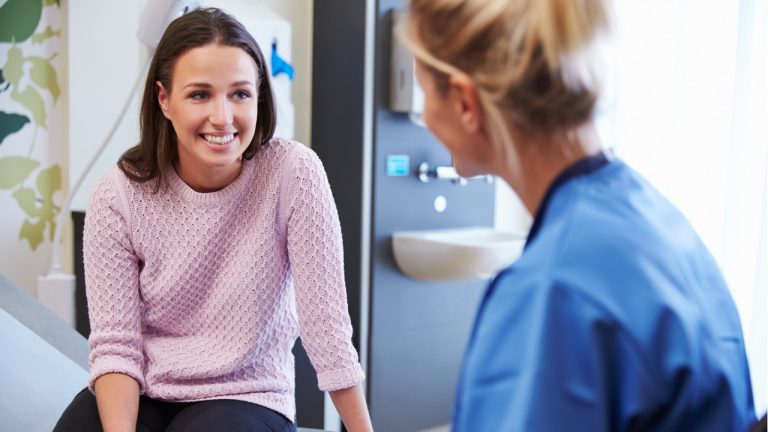Most women younger than age 40 don’t need to begin mammogram screenings yet. Why? In your 20s and 30s, your risk for developing breast cancer is low. According to the Centers for Disease Control and Prevention, only around 9% of all new breast cancer cases occur in women under the age of 45. In addition, younger women are more likely to have dense breast tissue. Factors that can increase breast density include pregnancy and breastfeeding, which typically occur during those young adult decades.
What Is Dense Breast Tissue?
Breast tissue is made up of glandular, connective and fat tissue. When healthcare providers talk about breast density, they’re referring to the proportions of these types of tissues inside the breast. Women with more glandular and connective than fatty tissue have denser breasts. Breasts generally become less dense as women age. About half of women older than 40 are identified as having dense breast tissue on a mammogram, which is the only way to really tell.
Most women learn how dense their breast tissue is when they begin regular mammogram screenings and can see how the different tissues look when X-rayed. Dense areas of breast tissue show as white on a mammogram compared to fatty tissue that is black. In dense breasts, regular mammograms are harder to read because tumors also appear white.
Mammogram Guidelines
So, when should you get a first mammogram? The American Cancer Society offers these guidelines for women with an average risk of breast cancer:
- Starting at age 40, women have the option to begin annual mammogram screening.
- At ages 45–54, women should get an annual mammogram screening.
- Beginning at age 55, women can switch to a mammogram screening every other year or continue to have annual mammograms.
If you have dense breast tissue, your healthcare provider may want you to change from a regular 2D mammogram to a 3D mammogram or also get a breast ultrasound to be sure nothing is missed.
Women at higher risk for breast cancer may begin having annual mammograms, often combined with an MRI, beginning at age 30. How do you know if you’re high risk? Talk to your provider if any of the following apply to you:
- Are of Ashkenazi Jewish heritage
- Have a family history of breast cancer
- Have a known BRCA1 or BRCA2 gene mutation confirmed through breast cancer genetic testing
- Have a personal or immediate family history of certain syndromes, such as Li-Fraumeni syndrome, Cowden syndrome or Bannayan-Riley-Ruvalcaba syndrome
- Have a personal history of radiation therapy to the chest between the ages of 10 and 30
- Have an immediate family member with the BRCA1 or BRCA2 gene mutation
Talk with a Professional
If you have concerns about your breast cancer risk or wish to discuss when you should start annual mammogram screenings, schedule a visit with a women’s health professional at St. Elizabeth Physicians in Northern Kentucky and Southeastern Indiana.

